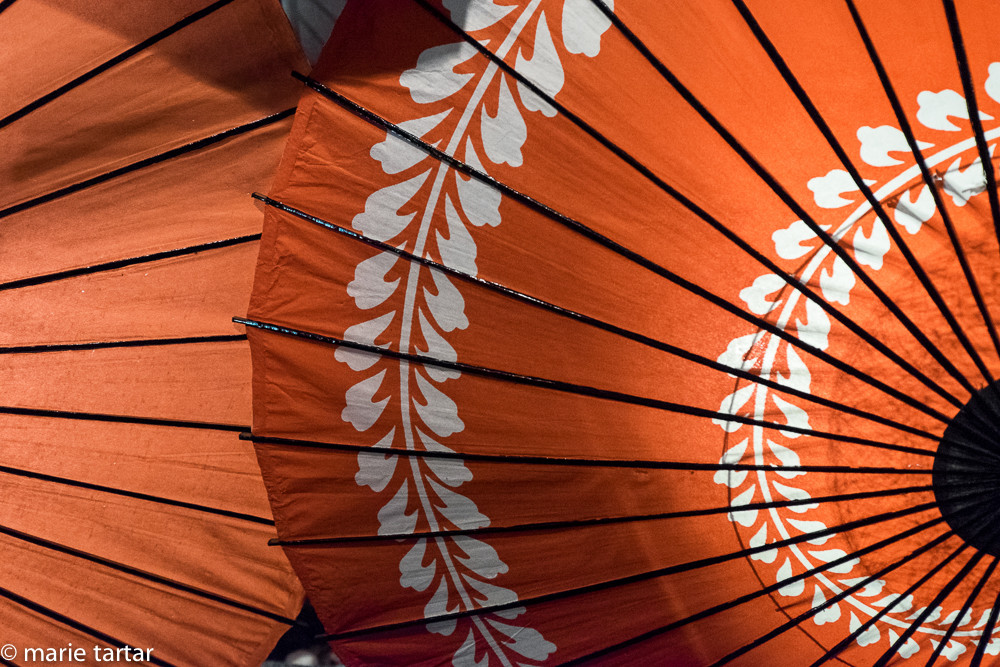
Preparing for this trip to Japan required both mental and physical origami. The mental gymnastics? Only coordinating 3 different itineraries (for Steve, my mother and me), involving 2 different arrival dates, 3 different departure dates in 2 different departure cities, 3 different airports in Japan and 2 in the US. Why so complicated? The impetus for this trip was for my mother to return to her native country for a month, possibly for the last time (she is 78) and my desire to spend some time with her there, as well as with her side of the family in Japan. With other trips on our calendar, having just spent a week in Tokyo in April and Steve’s desire to be in Sedona in fall, it took some negotiation to even persuade Steve to go. Eventually we reached a satisfactory compromise in which Steve and I would go to Japan together, he would return early the second week and spend the rest of the week in Sedona. In the meantime, Mama would travel to Japan while Steve was returning to the US, and we would meet up and travel together to her family home (in and around Gifu, Inuyama and Seki, north of Nagoya).
The physical origami was the challenge of traveling light enough to carry on our luggage, with an eye to being able to manage it ourselves in Japan, the land of sometimes packed trains, with many flights of stairs in the train stations. With photo gear, including a tripod and nearly 1/4 of my rolling suitcase occupied by gifts for my Japanese relatives (wood block print kitchen towels and notecards from Chino’s), it was a challenge.
Just after admiring their puzzle piece mixed media works near Japan Airlines check-in, we ran into the De La Torre brothers themselves, Einar and Jamex, at our favorite Terminal 2 eatery, Saffron (healthy fried rice with red rice and kale, your choice of tofu, chicken or shrimp). They were on the way to New York to work with a group of students. (We spent a wonderful day with them in December 2013 as they blew a new glass artpiece into existence; https://aperturephotoarts.com/art-adventures-home/). At my favorite gate (20), also home to BA’s non-stop to London, we ran into another contemporary art-loving friend, Karen, boarding the same flight, en route to Korea and Japan with the Stuart Collection.
Besides being non-stop to Tokyo, the best thing about our 787 plane was the individual entertainment system. I watched a charming Japanese movie “Dear Doctor” and watched a French dubbed version of Jean-Pierre Jeunet’s adorable The Young and Prodigious T.S. Spivet. (I liked T. S. Spivet so much, I actually watched it twice, the second time dubbed into Spanish!).
At Narita, we successfully found an ATM that worked for us (after literally running out of cash not being able to find an ATM in Tokyo in April, I’ve never been so happy to see a 7-11), cashed up, traded in our JR Railpass vouchers for passes and grabbed the Keisei express for Aoto, changing there for 3 more stops to Asakusa. Our Japanophile friend Joe had texted me a typhoon warning earlier in the week, which was manifesting as heavy rain on our landing and gusting bursts during our 3 minute walk from the station to the Gate Hotel.
Monday, October 6: Grey skies and silver linings
The best laid plans…are made for rearranging.
I had scoped out the rail journey to Naoshima Island with the aid of Hyperdia, an app of Japan Rail in which you input your starting city and destination, desired departure time and you receive multiple possible itineraries, including number of transfers, elapsed time and layover times. Based on that, I had printed out several possible departure times, labeling them “best case scenario” (7 am departure) and worst case scenario (11 am departure).
Never did I dream our worst case scenario would be not going at all. Jet lag had me lobbying Steve to get up at 5 am. Although we arrived with enough time to make the 7 am shinkansen, there was one major, typhoon related hiccup standing in our way-namely, the trains weren’t running. Figuring this out was a struggle, as the crowds became thicker and thicker as the hour advanced. The station was stuffy, and it became increasingly difficult to even maneuver through the waiting expectant hoards of people, even to peer at the empty departure boards or to approach the information windows for an estimate of when the trains might start again. At first, after a halting discussion with an official from JR, we were hopeful the trains would be running by mid-day. We stashed our luggage in a locker downstairs and decided to explore the station. It is huge and unwieldly, and we probably well exceeded our daily 10,000 steps just navigating around it. It was raining furiously, discouraging even short walks outside the station. After several hours with no sign of any resumption of service and with portions of the station almost unnavigable due to congestion, we decided to scope out the local hotel possibilities. Just before leaving, Gail and Ralph had introduced me to a great new sushi restaurant in Carmel Valley, Ken’s Sushi Workshop. They were just back from their first trip to Japan. Organized Gail had her notes all typed up for mutual friends planning a future trip. Not planning to spend any time in Tokyo this trip, I hadn’t brought along her pages on Tokyo, but I had read through them. One prophetic passage stuck in my head. She had mentioned the Shangri-La Hotel was in the station. She also mentioned the “club” floor had snacks and cocktail hour and might be worth investigating. Little did I think I would be making use of this information so quickly. But as we waited, becoming sweatier and more frustrated by the hour, we decided we better look into hotel options for the night, as it seemed likely we weren’t making it out that day.
While we were wandering/exploring Tokyo Station, we took refuge for a while in the lovely lobby of the Shangri-La Hotel, which had free Wifi. The Tokyo Station Hotel was booked, per the web. The Shangri-La had only a few rooms left. We decided our chances of making the last ferry to Naoshima Island were slim, and although not happy to lose a day there, ended up booking one of the last rooms available, on the club floor.
By the time we tore ourselves away from the quiet oasis of the Horizon Club, and the ocha (green tea) and gorgeous tiny cakes, cheese, hazelnuts and other tidbits which added up to a nice light lunch for us, the afternoon was completely transformed: sunny, puddles on the ground, but little other trace of the tempest which had ground Japan’s efficient transport system to a halt just a few hours before. The sun was not only out, it was shining with that peculiar Asian intensity, in which it seems to seek you out for glaring, nearly unbearable, individual attention.
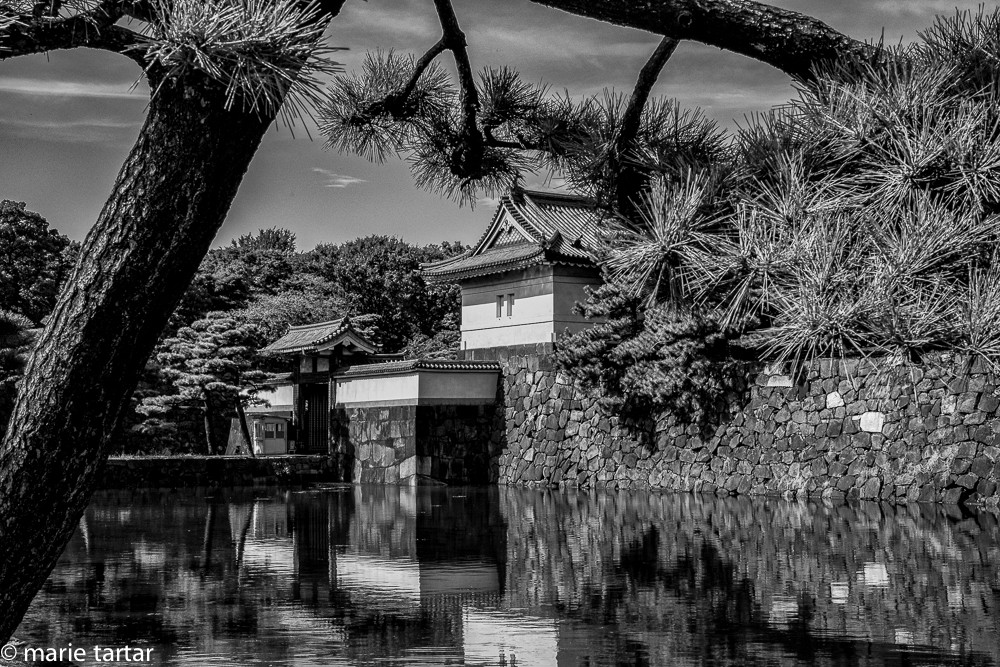
Hard to believe just a few hours before, it was raining hard enough to shut down shinkansens in Tokyo Station (Imperial Palace Outer Garden)
We soon found ourselves cowering under the umbrellas/parasols which just a few hours ago had been necessary to avoid being soaked to the skin stepping even a few steps outside (necessary to reach the entrance to Shangri-La). Being a Monday, our options were limited. All the museums we hadn’t made it to in April were closed, except one: Mori Art Museum in Roppongi Hills.
The Mori Art Museum is housed on the upper floors of a glass cone contemporary structure, part of a large shopping and entertainment complex, accessed from the Roppongi Hills subway stop. The entrance includes access to the observation deck, with a panoramic view of the immense city.
The doll exhibit didn’t do much for us, but I really enjoyed the main exhibit, Taiwan-born artist Lee Mingwei and his exploration of bonds and connections between us. A component of his work has interactive components, including letter writing booths, in which one could write a letter, perhaps seeking forgiveness or conveying a message one regrets never writing, to be mailed or not. In another work, the visitor could take a flower, on the condition that it be given away to a stranger while taking an alternate way home from the customary. An interesting section of the show included other artists whose work traced similar inquiries. I was surprised to see the composer John Cage included, with several interesting riffs on the 15 rocks of Ryoan-ji temple garden, in which he outlined the rock contours into a densely layered abstract grid. Yves Klein and happenings artist Allan Kaprow also were featured as artists whose explorations traversed some of this same territory, namely actions and interactions. There were also several brushwork paintings of Lee Ufan, introducing us to an artist we would gain a fuller appreciation of at the Naoshima Island museum dedicated to his work. I really liked the photographic work of Ozawa Tsuyoshi, of a young woman armed with a weapon composed of vegetables. I would have loved to have been available to enter the drawing for “The Dining Project,” in which the winner is hosted after hours in the museum for a meal, prepared by the artist or another host.
On our return to the Horizon Club to pick up the key for our new room on an entirely non-smoking floor (the first rejected for an oppressive smoke overlay), it was cocktail hour. A crisp, refreshing Bombay Sapphire gin and tonic for me and Australian shiro-wine (Chardonnay) for Steve were the perfect accompaniments to a new selection of substantial hors d’oeuvres, more than sufficient for dinner for two people who were struggling to stay up until 9 o’clock before crashing into a welcome, overdue sleep.
Tuesday, October 7, 2014
Escape from Tokyo: Try number 2 to slip Tokyo’s gravitational pull was seamless, smooth, a stark contrast to the prior day’s flail. Was this a case of endless rehearsals making the performance perfect? The prior day, we were quickly exhausted by multiple traverses of the station, up and down endless stairs and escalators, innumerable map perusals, completely disoriented after a while. This morning, we walked quickly with nary a false step, up one escalator, then another, directly to the platform, with half an hour to spare before catching the 8:03 shinkansen to Okayama. We were fueled by an expansive and delicious breakfast spread in the quiet and luxurious Horizon Club dining room. My Japanese breakfast was served in a subdivided lacquered box, inset with beautiful small ceramic plates, pickles in one compartment, chawanmushi (steamed egg custard, this version with crab) in another, grilled salmon in the center, with miso soup and rice. There was a generous selection of nuts, fruits, yogurts, lox, Japanese cheeses, pastries and other breakfast options served buffet style as well. Our samplings of the Horizon Club’s offerings the prior day had convinced us that it would be ridiculous to skip the included breakfast (starting at 6:30 am) in order to make the 7:03 train.
I can tell I have made progress in Japanese since our trip in April to Tokyo. In fact, I am at a particularly dangerous stage of language learning; that is, I can now convince most Japanese speakers that I can speak Japanese. In fact, that isn’t overstating the case: I can now SAY a lot in Japanese, at least transactional conversation, if not philosophical discourses. The problem, of course, is comprehension of the full speed, no-dispensation-for-learners responses that inevitably come my way. I am picking up more of these responses, sometimes now a phrase, sometimes only a word or words here or there, but clearly, have a long way to go. I’m not discouraged yet, as I recall clearly having this same issue in French a few years back. Hopefully, my ears will catch up to my tongue with enough persistence. In case the significance of the title of this post was lost on anyone, a word of explanation: Nihon is Japan in Japanese, the go suffix means language, so Nihongo=Japanese. My alternative spelling is just my little play on words.
Naoshima Island seems like a mythical pilgrimage site, the perfect marriage of sea and sky, merged with Tadao Ando’s minimalist contemporary architecture into a haven for the soul.

This gallery in Benesse House “Park” was one of my favorites, with work by Hiroshi Sugimoto (at right, a long, dark and mysterious, multi-panel photographic “screen” of pines, with a glowing lightbox in front; to the left, a gallery of atmospheric architectural icons (such as the Twin Towers seen here)
Even traveling to it, at least from Tokyo, has a progression to it which makes the reward on finally reaching it that much greater. The journey itself was pleasant enough, but long: shinkansen from Tokyo to Okayama, to a series of increasingly slower local trains to Uno, then a 20 minute ferry, and finally the most welcome sight of the Benesse House bus at Miyanoura Port.
From our 8:03 departure from Tokyo Station to arriving in our “Beach” accommodation at Bennesse House at 3:15 pm, it was a journey. Not unpleasant, but many transfers. The timing is good in terms of arriving in time for beautiful golden light by which to explore the art-work studded grounds, beach and cliffs on the climb up to Benesse House Museum.
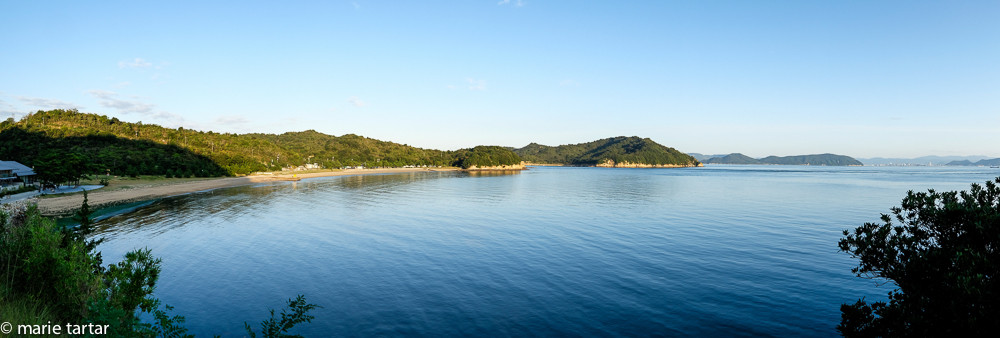
Benesse House is to the left, a wonderful refuge from which to admire Naoshima Island’s coast and the Seto Sea

The curve of this glass art installation echoed the curve of Benesse House spa (Cylinder Bisected by Plane, Dan Graham, 1995)
Once there, the regret that we hadn’t been able to come as planned for 2 nights, including a stay in “Oval”, really set in.
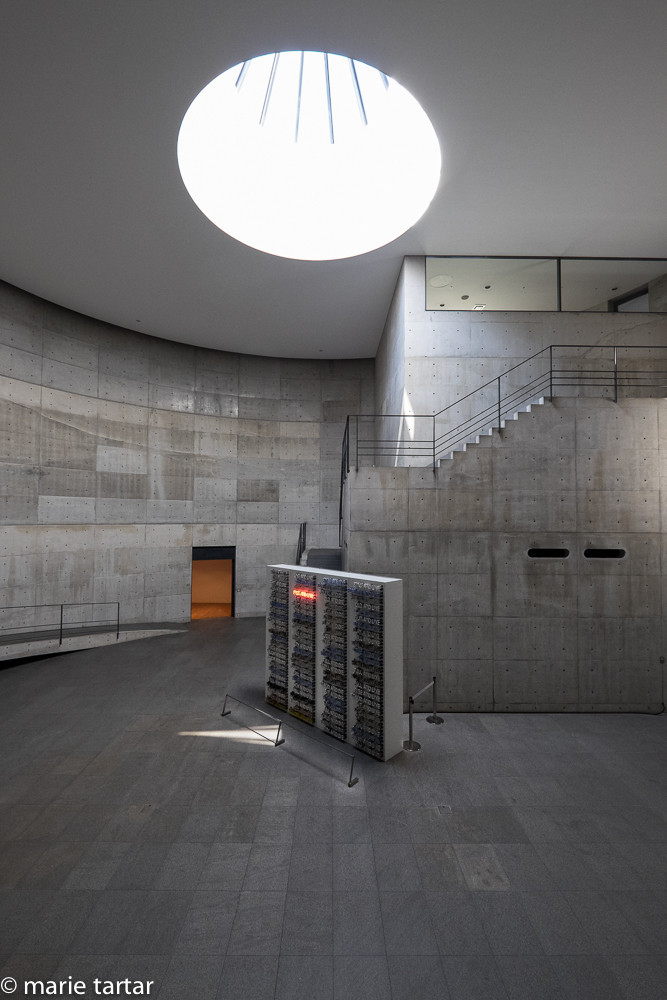
Bruce Nauman work from 1984, “100 Live and Die,” flashes cryptic messages in large round gallery at Benesse House Museum; here, piss and live
We had to be philosophical about it, and look at this short trip as a scouting trip for a future, longer stay. Our delayed departure also forced us to cancel a scheduled visit to the Noguchi studio a ferry ride away in Takamatsu, necessarily deferred until next time.
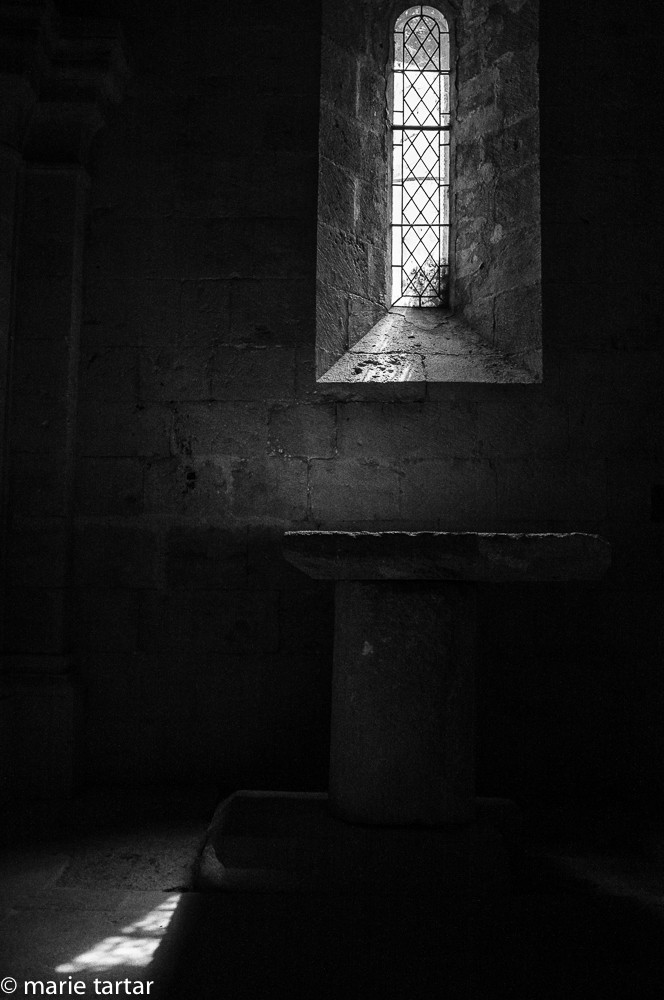
The rough cool walls, restricted light sources and austere simplicity of Ando’s buildings brought the simple but beautiful Cistercian abbeys of southern France to mind (here Abbaye de Silvacane, near Aix)
(For future reference, I would book rooms at Benesse House first, then book air reservations around the available dates at Naoshima. Reservations are accepted up to 6 months in advance.) Although I started months in advance, there are so few rooms available in certain accommodations, namely Oval (6) and Beach (8), that they are booked well in advance. I had planned to start in Tokyo, spend a few days, then move to Kyoto for a few days, then move to Naoshima and back to Kyoto from there, but the difficulty in obtaining Benesse House room reservations for 2 nights in a row forced my hand. By the time it became clear we’d have to go there immediately on arriving, I had already booked the air travel. It would be a shorter trip to go to Naoshima from a more central location, like Kyoto, Osaka or Kobe, than from Tokyo.)

Morning light streams into our Beach room at Benesse House. Beach is unusual among Ando’s structures, as is Park, being wooden structures
Outside our room were prints by James Turrell of the corner light illusions we had seen at his retrospective in the Guggenheim in the summer of 2013. Inside our room were prints and mixed media works by Jannis Kounellis, an artist I wasn’t familiar with, also one of the featured artists in the Benesse House Museum. I didn’t really “get” a straight looking black and white print of a boat in the room until the next morning, when I saw small boats just like this traversing the channel in front of the hotel, back and forth, presumably fishing, probably dragging a net.
I thought the French restaurant, Terrace, at Benesse House might be a consolation prize, since missing our first night at Naoshima also caused us to miss dinner at the Japanese Issen Restaurant in Benesse House Museum, but the meal was superb. I actually preferred the setting as well, with lower level lighting. We did have our Japanese breakfast the next morning at Issen, and the ambiance struck me as a better morning setting. With a wall of Andy Warhol flowers, and facing the divided courtyard with Hiroshi Sugimoto seascapes flanking the real thing, it was a wonderful setting for digesting both the wonderful meal and the magical setting of the site and Ando’s monastic structure.
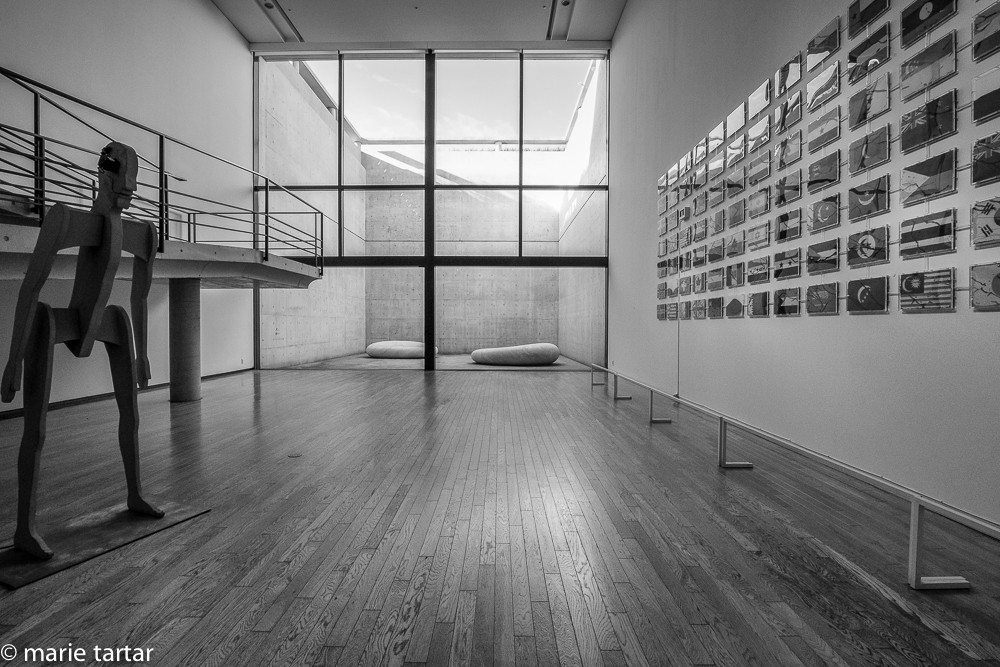
Jonathan Borofsky work of 1986 to the left was “chattering” non-stop (“Chatter…chatter…chatter”); to the right, a colorful sandwork, World Flag Ant Farm, 1990 by Yukinori Yanagi; my favorite piece was outside in the distance
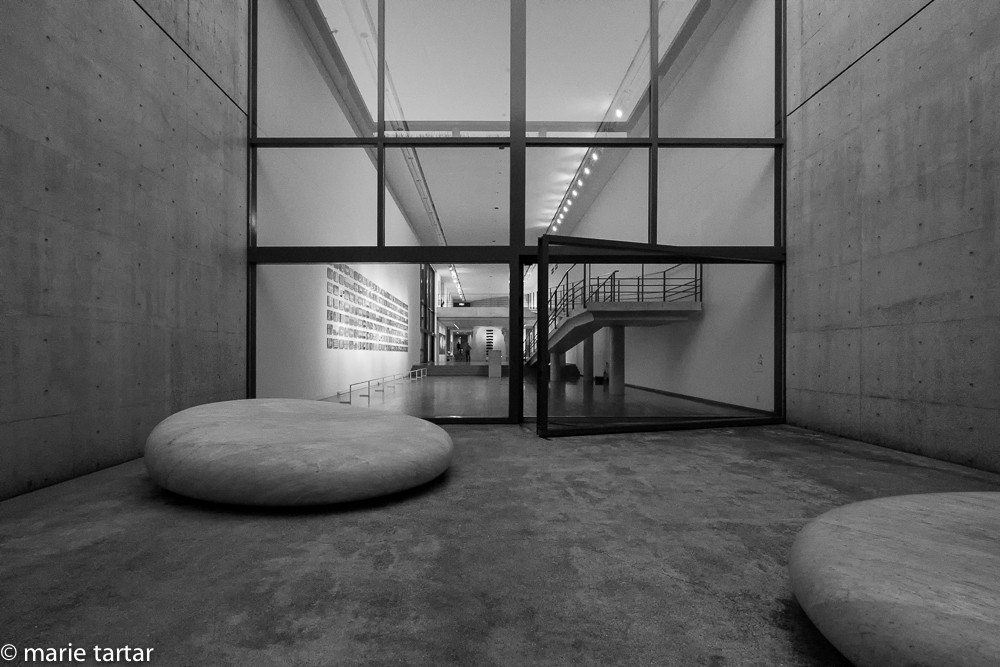
This monumental stone piece in an outside courtyard was my favorite piece at Benesse House Museum (Kan Yasuda, 1996, The Secret of the Sky)
Wednesday, October 8, 2014
An action packed day, trying to see as much of Naoshima Island in the morning as possible before heading in the afternoon to Kyoto in time to be met at our Aoi Kyoto Stay apartment, our home for the next 2 nights. We caught the shuttle up to Chichu Museum, another Ando designed structure, dedicated to the work of 3 artists, James Turrell, Monet and Walter de Maria. Chichu means underground in Japanese, and the entire complex is below grade, minimizing the natural environment visual footprint.
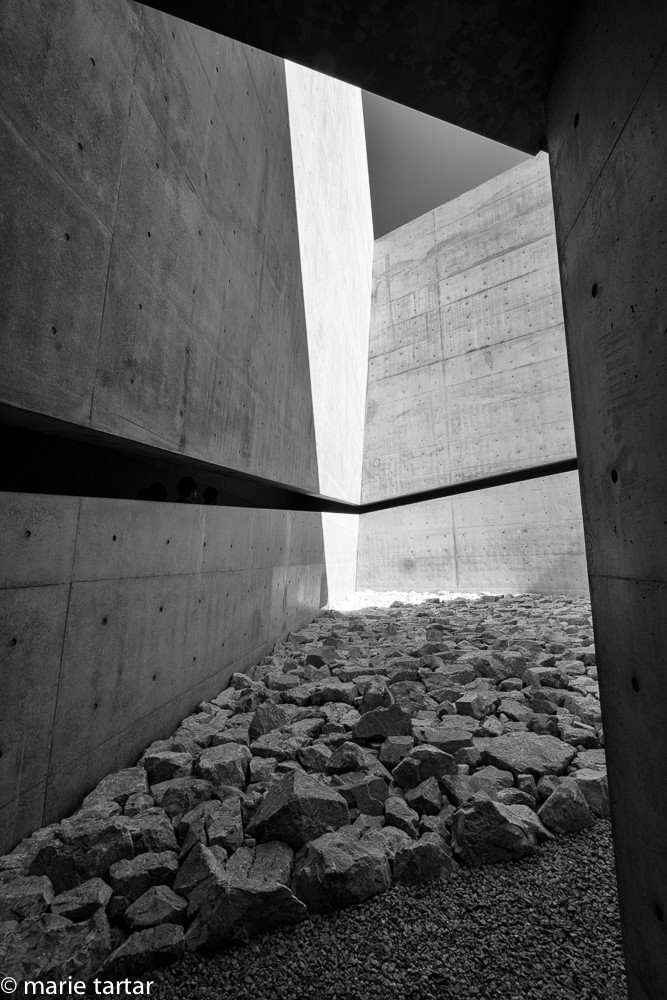
Geometry and textures: Stone-filled interior courtyard of Chichu Museum (covert camera work required)
For both of us, the most gasp inducing sight was a large temple-like Walter de Maria gallery, with a curved, suspended white ceiling, temple steep steps up to a giant black granite sphere, with the walls set off by triads of gold columns (triangular, pentagonal and square in shape), a jaw-dropping sight. Truly astounding in scale and monumentality, it would have been difficult to capture, even if photography was allowed. Which it isn’t. I could only think of the Acropolis as a comparison. (By the way, in case you are wondering, as we were…Maria rhymes with carrier.)
James Turrell was represented by his illusionistic light-box like geometric projections in corners, which we had seen at his Guggenheim retrospective in NY in the summer of 2013.
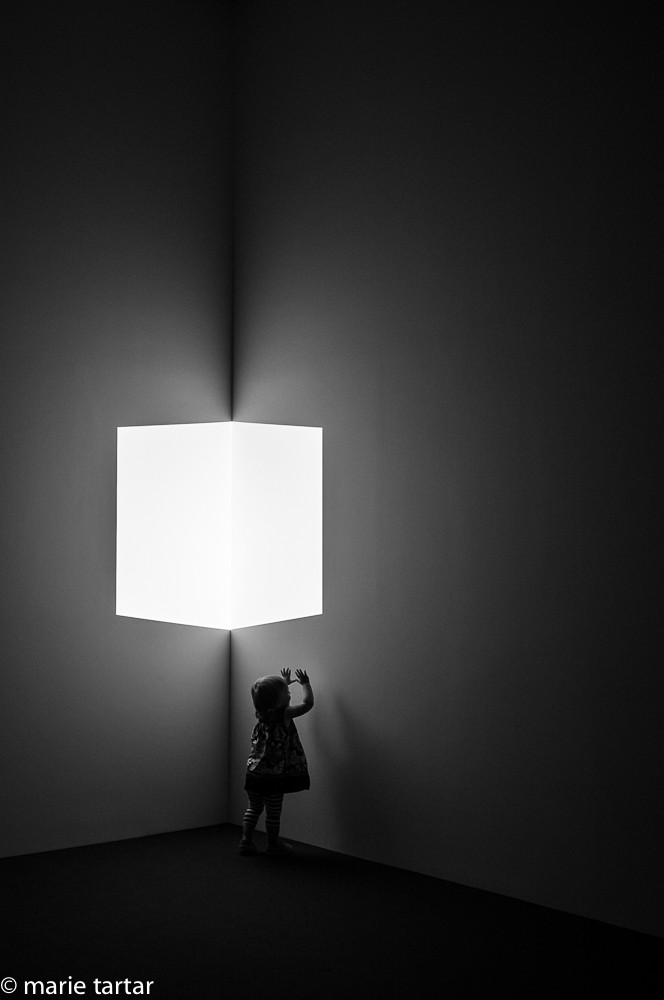
James Turrell projection piece, from Guggenheim retrospective in 2013 (photography was not allowed of similar pieces at Chichu Museum in Naoshima Island)
Monet’s Nympheas (water lilies) were housed in a large, white plaster gallery with softly rounded corners, emulating the famous installation of these late works at Musée de l’Orangerie in Paris. A surprise outside the museum was a roadside, waterlily filled pond and garden, a clear homage to Monet’s gardens at Giverny.
The Lee Ufan Museum was a short walk downhill. Dragonflies flitted about the lawn in abundance in the mid-day heat. He is a sculptor and minimalist artist, the subject of a retrospective Marking Infinity at the Guggenheim in 2011 that we missed. Based on the installations we saw at Naoshima, I’m now considering working in a trip to Versailles when we’re in France in November, where he will be the 4th contemporary guest artist.
Alas, losing that first day meant no time for the art house projects in town, or for art installations on nearby Teshima Island, all deferred for a future trip. For our return, on a small ferry, trains, and more trains to Kyoto, we elected the more complex, 3 transfer option from Uno, to Chayamachi, to Okayama, changing shinkansens in Shin-Osaka, arriving 24 minutes earlier than the shinkansen direct from Okayama to Kyoto. From Uno, we were in Kyoto Station a little under 3 hours later. This was of course, after the Benesse House shuttle bus whisked us back to Miyanoura port, and the reverse 20 minute ferry ride back to Uno.
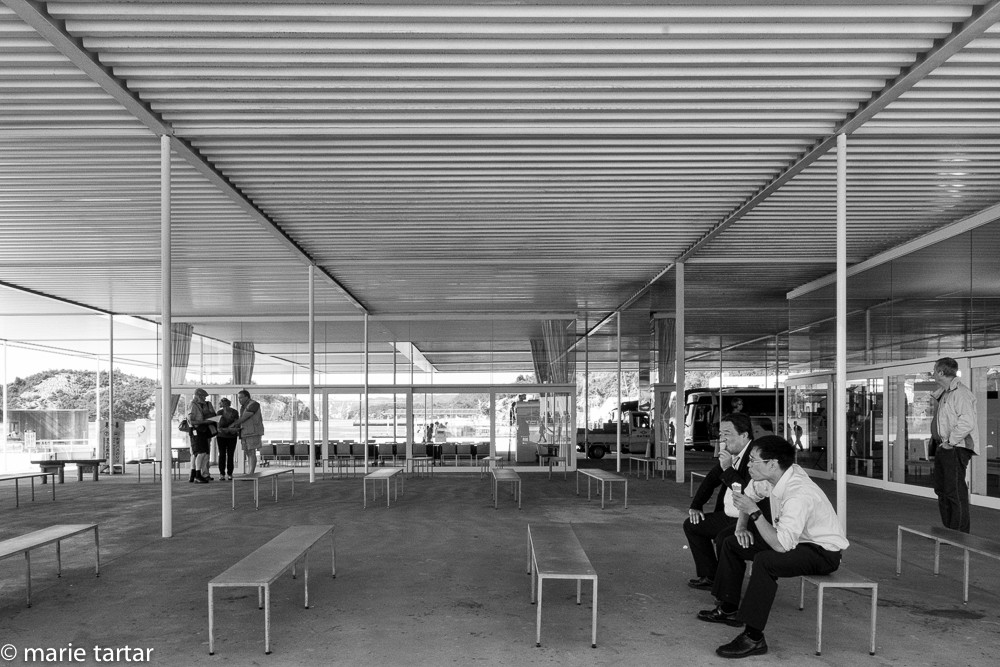
Even the ferry terminal has a structure of architectural interest, by Pritzker prize winning firm, SANAA (Sejima and Nishizawa and Associates)
Thankfully, the staff from Benesse House was still there, waiting for new arrivals, to show us there is another ferry terminal next door, not the one we arrived on, with a faster, smaller boat.
Although it was a long distance and a too short stay, we felt well rewarded for making this contemporary art and architecture journey. We now have the considerable logistics dialed, and would plan to spend 3, perhaps 4 days in the area on a future stay. Other than the typhoon variable, the weather we encountered in October was mild and delightful. Going even later in October or early November would increase the likelihood of fall color, which was just starting in Kyoto. We spent a subsequent marvelous week getting reacquainted with Kyoto (it had been 20 years), the next stop in our Nihon-GO! travelog.
-Marie



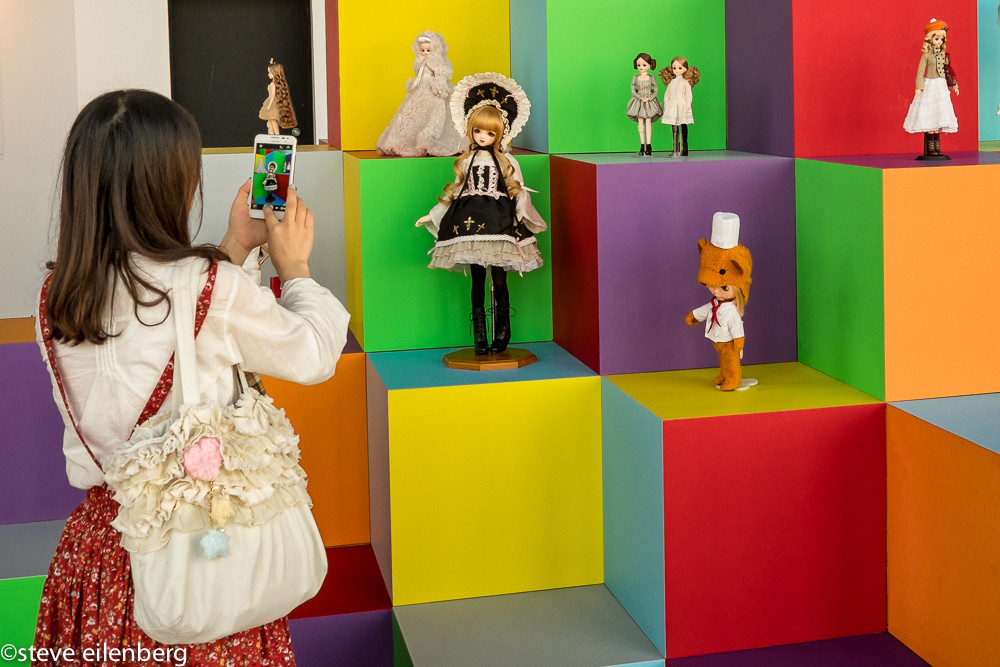
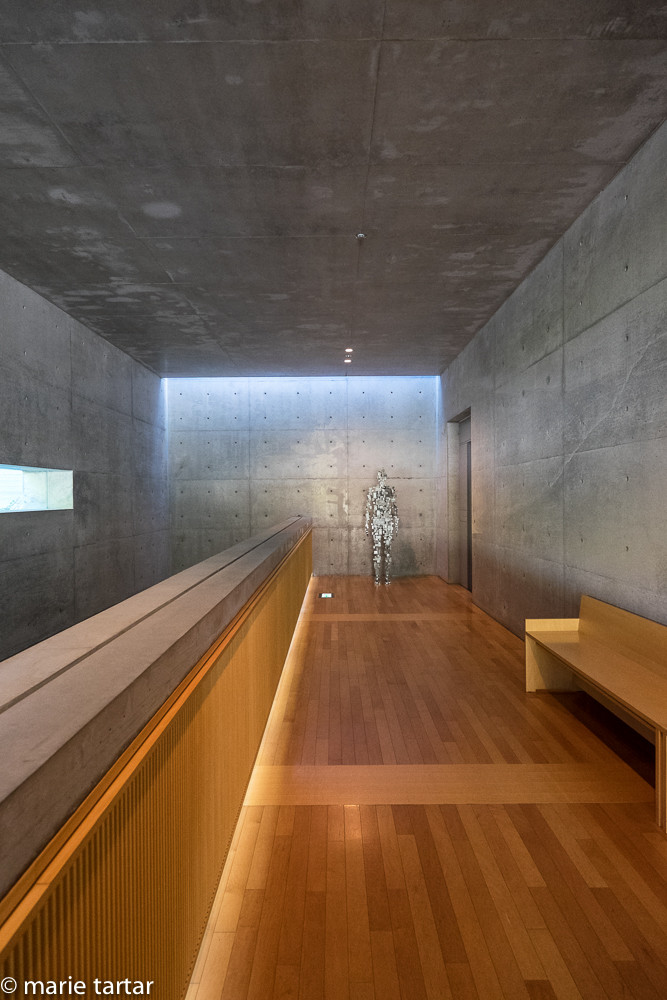

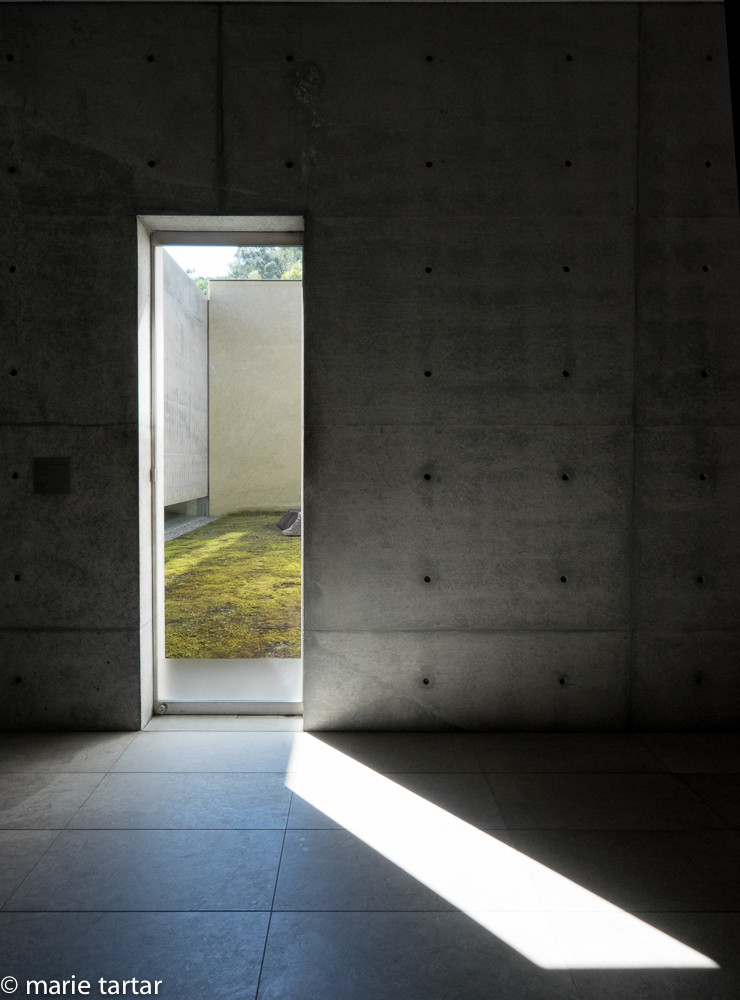
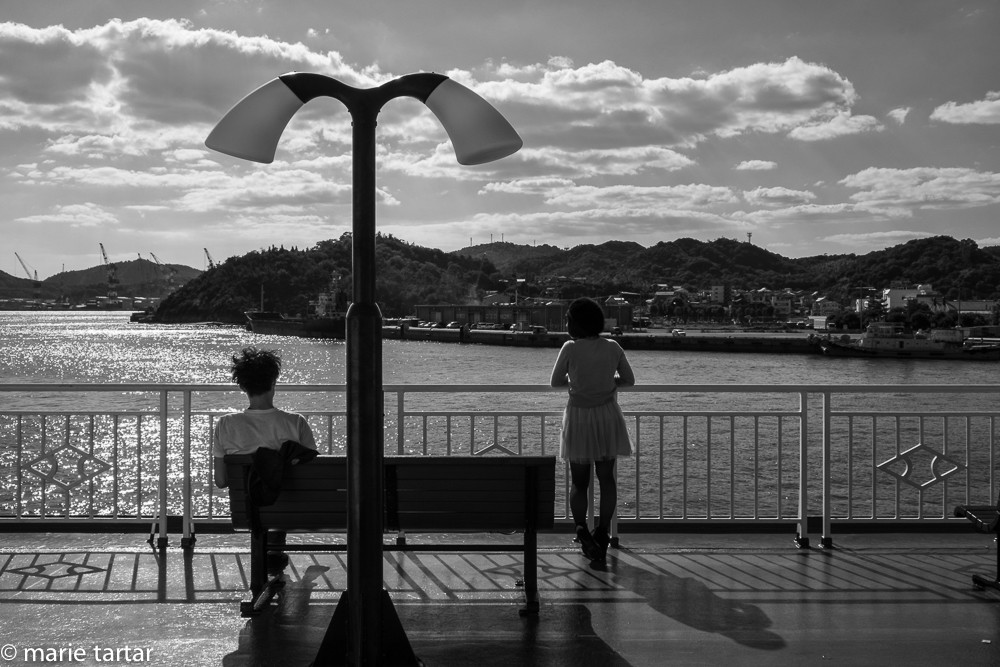
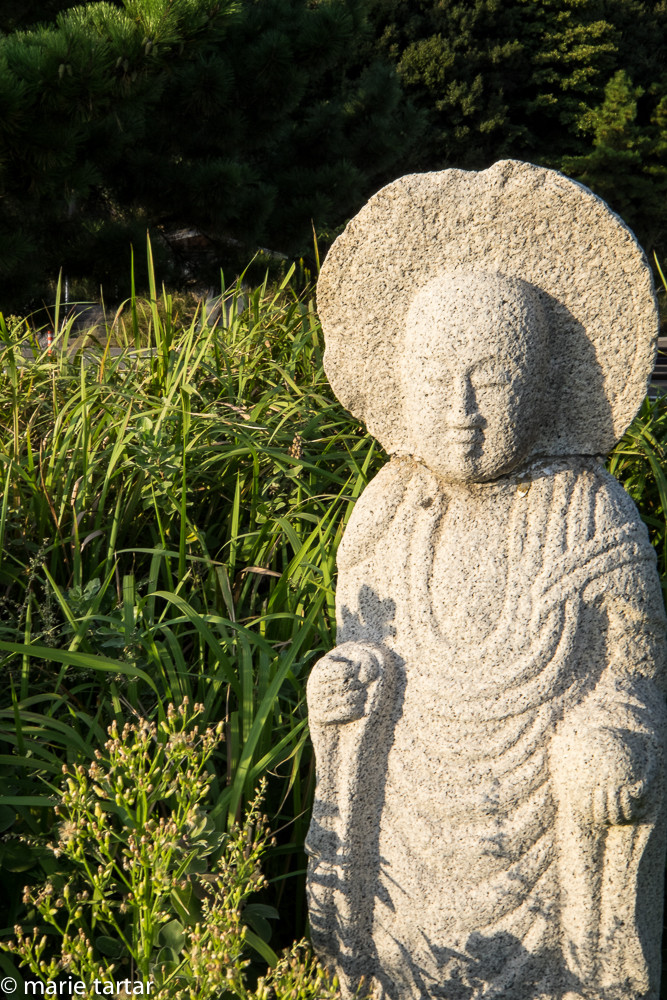
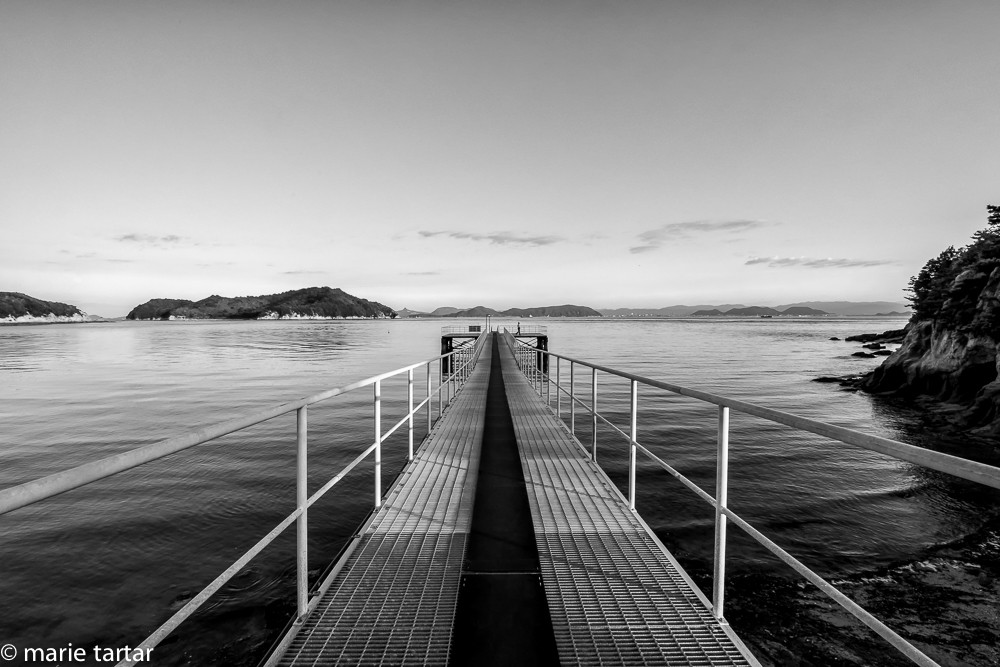
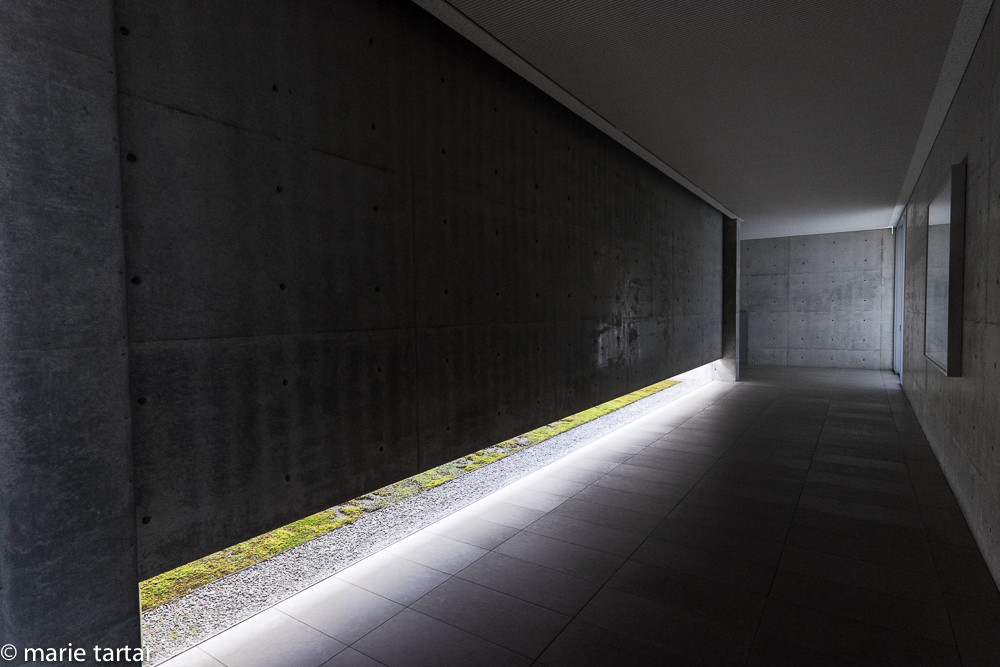
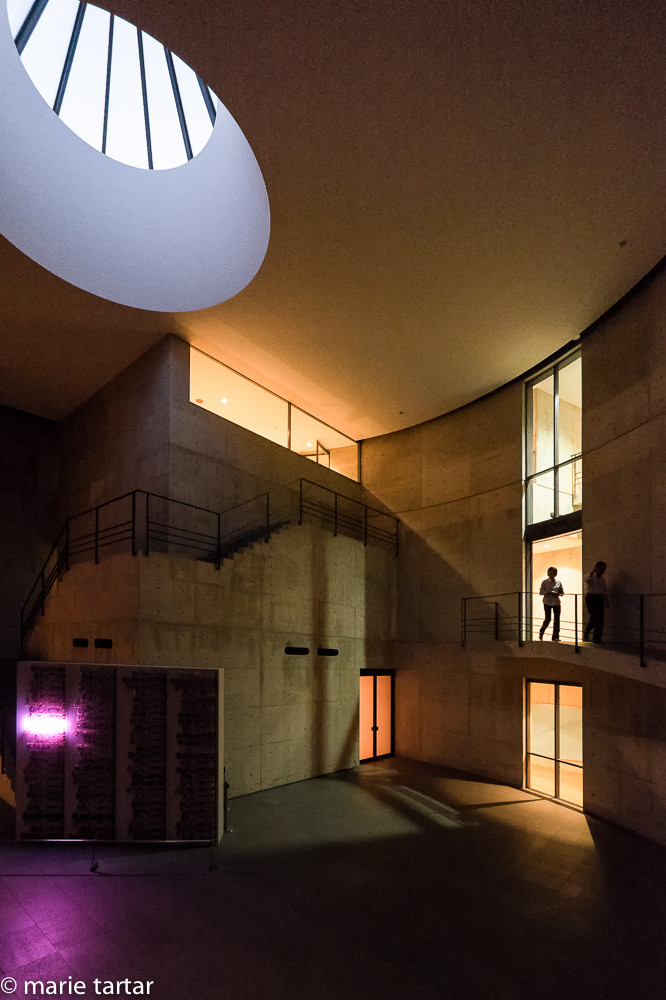
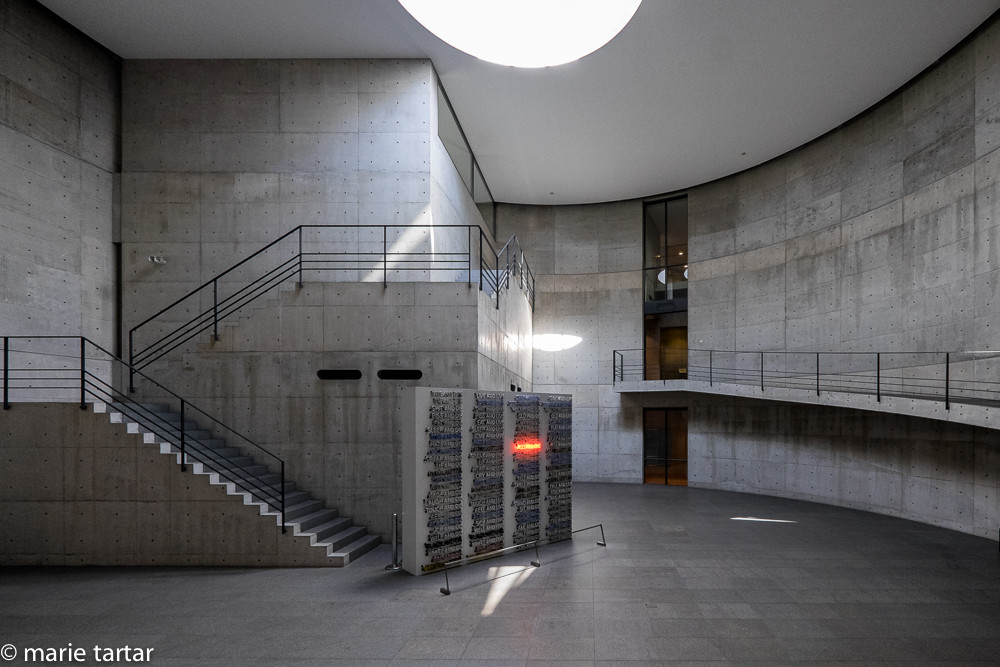
Hello! I’m planning a trip to Naoshima island. initially I wanted us (a family of 3, including one 2yo toddler by the time we make this trip) to spend 2 nights at the island. However, after reading your blog entry, you said you wouldn’t mind 3 or even 4 nights there. How would you plan for the 3 to 4 days? I’m not sure if my 2yo can handle too much art (which is more for the parents) installations. Thanks!
Hi, There are adjacent islands which can be reached by ferry. One is Takamatsu, where one can visit the Noguchi studio. That would probably take at least half a day. Another half day or so would be taken up with the Art House Projects in restored houses on Naoshima. There are other installations on Teshima and Inujima Islands, also reachable by ferry. Check out the Benesse House website: http://benesse-artsite.jp/en/art/
-Marie